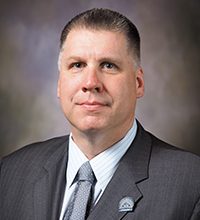The trouble with TXVs
It started about this time two years ago. It was early June, and the first real heat wave just hit the D.C. area. The Monday after a hot weekend, we had three warranty TXV failures. This was odd because I don’t think we had replaced even one TXV in the previous five years.
The failed TXVs were in three different types and brands of equipment. One was on a unitary split system heat pump. One was on a geothermal split system heat pump. The third was on a package water source heat pump on a building loop. The only common factor was that these were all new installations — the oldest being about seven months old. This was the first time they were run in cooling mode, and the failure point was a clogged TXV at the evaporator coil.
I ordered replacement TXVs and scheduled the warranty repair. All three of these were new installations, and my clients were not happy sweating out several hot days waiting for the repair. They had paid top dollar for new systems that failed during the first heat wave.
I was not happy having to tie up a service tech for four to five hours per repair during my busiest time of the year. I was passing up on revenue-producing service calls to take care of non-revenue-producing warranty service.
Replacing a TXV is not the easiest repair, especially if the evaporator coil is in a tight, hot attic as two of these were. First you have to pump down the unit, if the TXV is not totally clogged. Next the offending TXV is cut out and a new one is burned in. Wrap the TXV with a wet towel to prevent overheating and damage to the internal mechanism. The refrigerant filter drier is then cut out and replaced. After evacuating to under 500 microns, the system’s refrigerant charge is adjusted to manufacturer specifications and brought back online.
We did this repair three times in one week. Within two weeks, all three TXVs failed again. In addition, two more new units failed with the same TXV problem. What could possibly be going on? All three TXVs were from the same manufacturer. Maybe a bad batch of TXVs got out the door? A call to the manufacturer brought some new information. They were aware of the TXV failures, but it was not caused by a bad TXV. They were getting clogged up by a foreign substance.
It turns out that the failed systems all had one common component: Copeland compressors. Apparently, an outside vendor changed the corrosion inhibitor used in the manufacturing of the compressors. This new additive was chemically reacting the POE oil, creating a sticky tar-like substance that would cause the TXV to stick and clog. This issue was most prevalent in the 1.5, 2 and 2.5-ton systems, presumably because the passageways and tolerances were tighter in these smaller TXVs versus the larger sizes.
After multiple callbacks, replaced TXVs and dealing with angry clients, we finally arrived at a solution through a manufacturer’s service bulletin. The solution was an oil additive that is injected into the system using a special tool (see photo). There are several products on the market, but we have had consistent success with Nu-Calgon AC Renew. It comes in a 4-ounce can and is easily added to the system in about 15 minutes using their tool.
Typically the unit will exhibit lack of cooling and high superheat, or the system will have shut down on lockout due to a system error such as low suction pressure or high head pressure. Once the AC Renew is added, you can literally watch the head pressure drop and the back pressure rise as the additive goes to work, dissolving the sludge and lubricating the internal components in the TXV.
We have used this solution successfully for over a year. As we go back for routine maintenance, we are adding the AC Renew to any system manufactured in the 2013-2014 time frame regardless of the size of the system and whether or not there have been problems with the TXV. It is better to be proactive rather than wait for a problem to occur. In addition, there are benefits to the additive aside from the TXV, such as better lubrication in the compressor and reversing valve, reduced energy consumption and increased heat transfer.
Most manufacturers have released service bulletins that can be easily found through an online search. Unfortunately, most came out long after the initial problems surfaced. We were running around in circles with ineffective repairs and upset customers. In the beginning, my fellow contractor was my best source of accurate information.
In August 2014 Emerson Climate Technologies, the manufacturer of Copeland compressors, issued a marketing bulletin that acknowledges the problem without either accepting responsibility or offering a solution other than to consult directly with the OEM supplier. It is clear to me that this bulletin was written by the legal department, not the engineering department. The bulletin can be read here:
http://www.emersonclimate.com/en-us/Resources/Documents/Frozen-Coil-Update-8-28-14.pdf
My takeaway from this is that we contractors need to stick together when we run into industry issues like this. There will always be field problems we will have to deal with. The mark of a professional is how you deal with these issues. Do you stick your head in the sand, act like the problem does not exist and hide behind legalese? Or do you step up, deal with the problem head on and resolve the problem? I hope it is the latter.
Dan Foley is president and owner of Foley Mechanical, Inc. based in Lorton, Virginia (www.foleymechanical.com). FMI specializes in radiant, hydronic and steam systems as well as mechanical systems for large custom homes. He can be reached at 703-339-8030 or at dfoley50@verizon.net.





